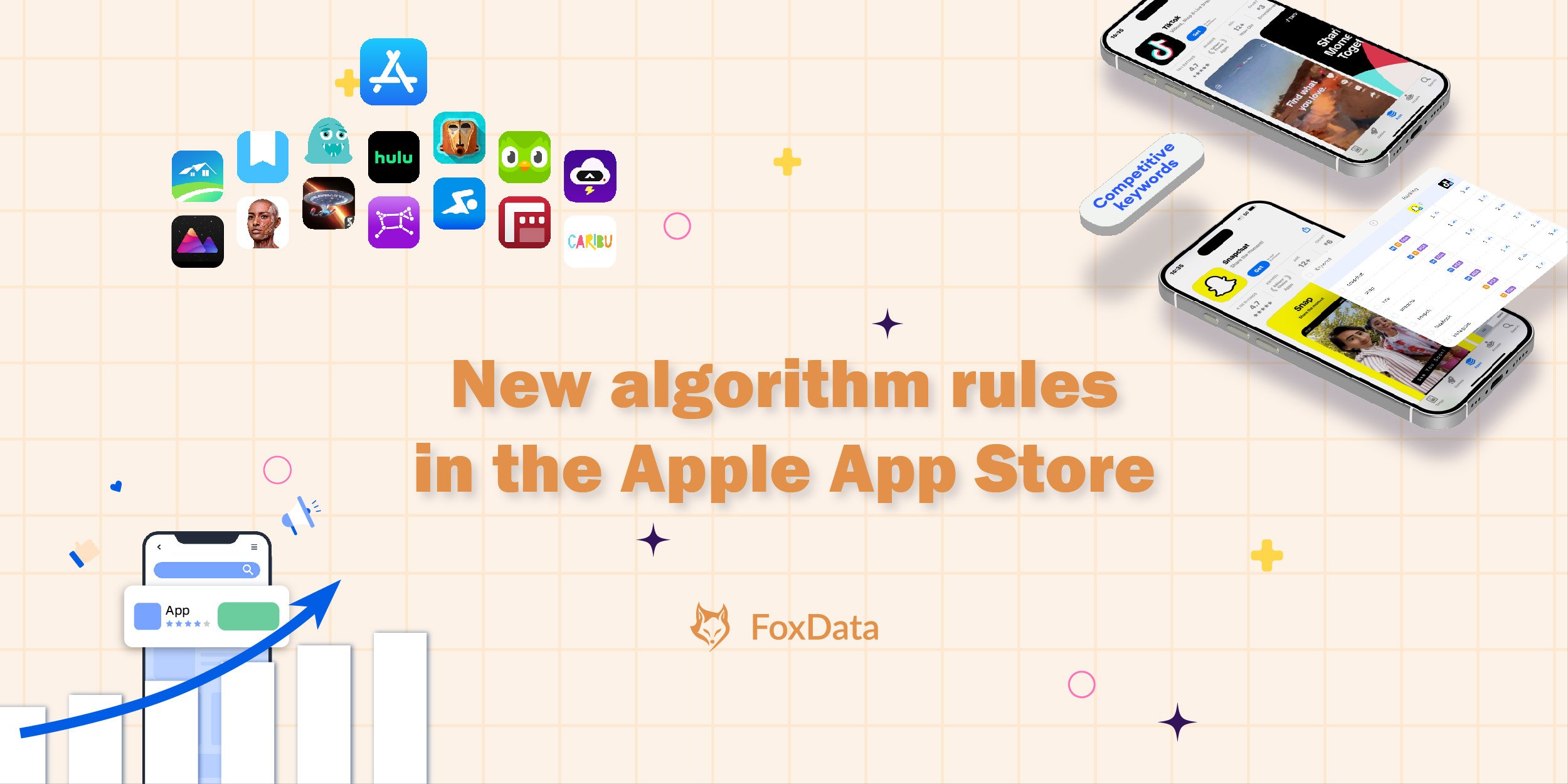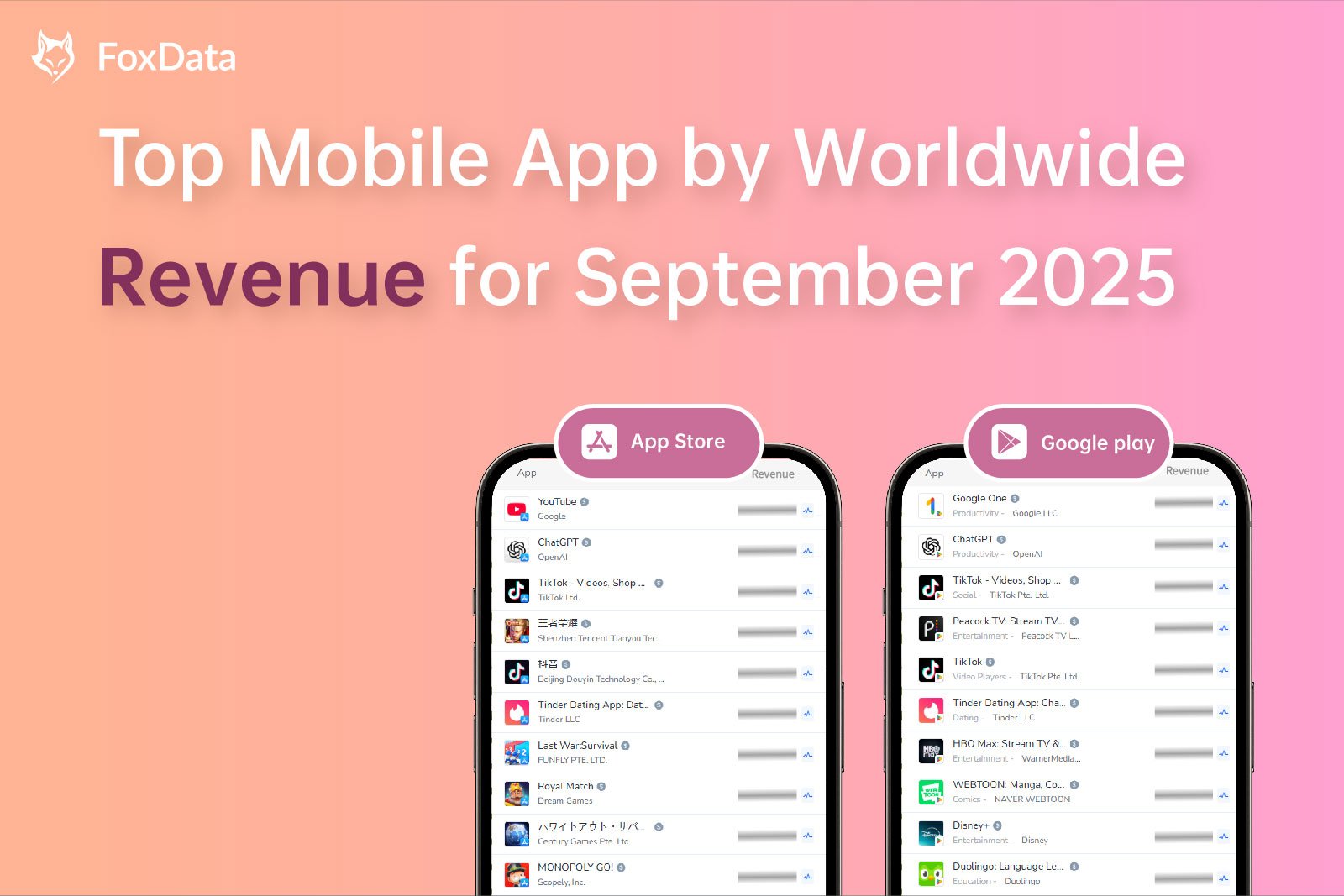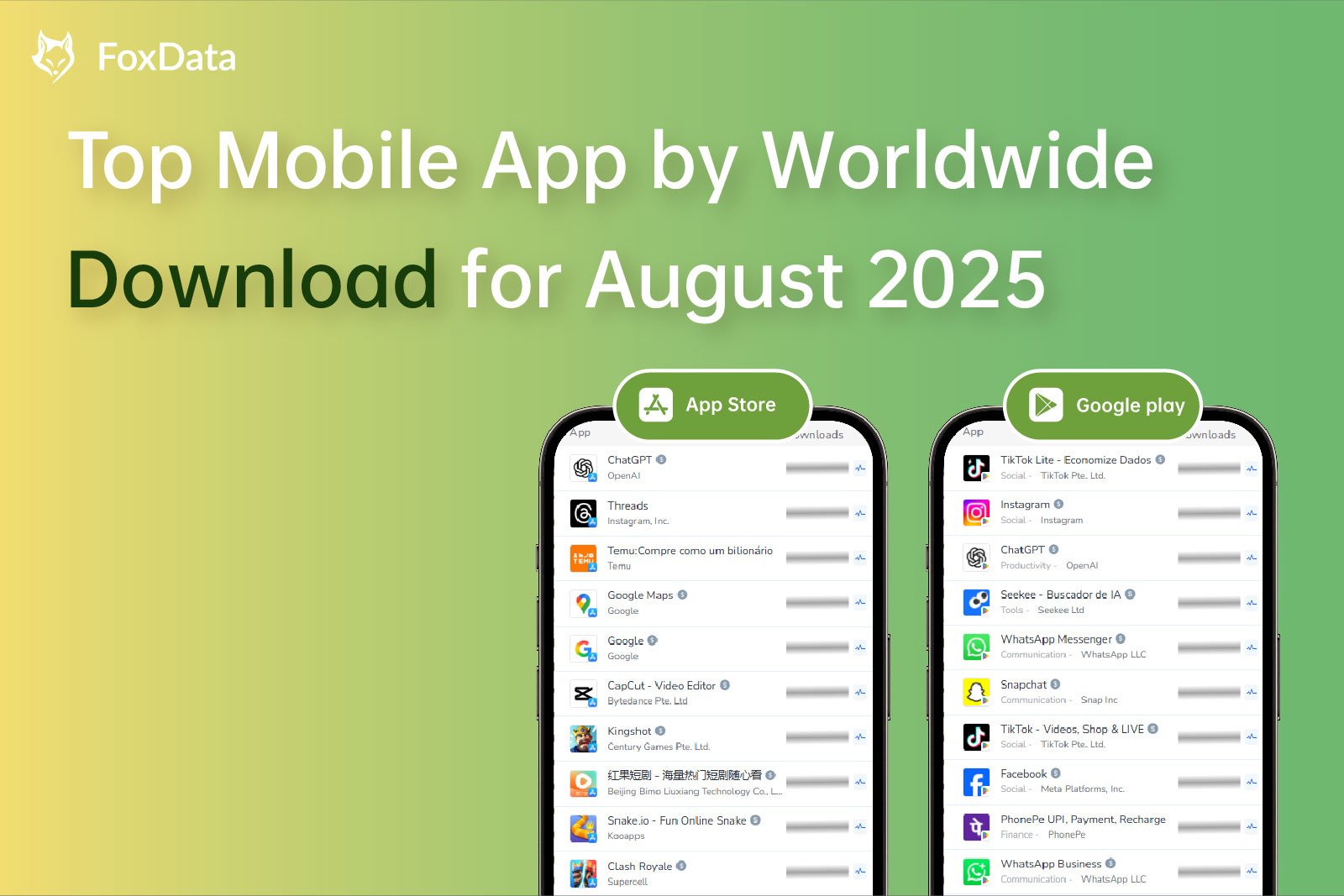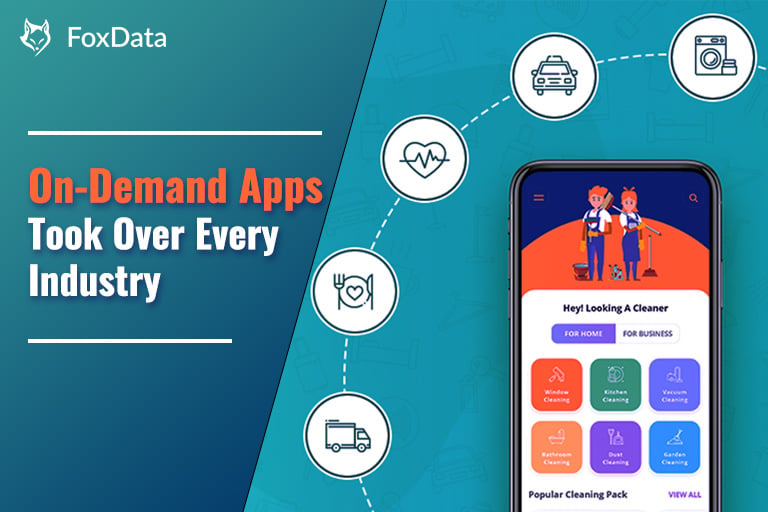
A Major Shift in Keyword Distribution Happened on June 4, 2025. Did You Notice?
On June 4, 2025, the App Store's keyword ranking system underwent a significant, though outwardly quiet, transformation. We observed noticeable data changes in a range of apps on that day.
Take ChatGPT as an example. According to FoxData’s keyword historical trend data, the number of keywords in various ranking intervals changed significantly that day:
Total keywords ranking at Top 1 reached 4,184、Top 2–5 hit 16,269; Top 6–10 reached 14,102; Top 11–20 reached 21,519、Total number of keywords reached a record high of 205,604.
But just 24 hours later, on June 5, the entire keyword distribution structure experienced a dramatic collapse—Top 1 + Top 2–5 keywords dropped by over 20%, and total keywords fell back below 174,000.
This extreme fluctuation was not due to algorithm bugs or anti-cheating sweeps. It’s highly likely tied to what Apple announced at WWDC 2025: the official rollout of an "AI auto-generated labels mechanism" across the App Store.
Upon investigating added or lost keywords rankings across different app types and games, we’ve made the following assumptions about the new keyword algorithm:
Enhanced Semantic Accuracy → Building a "Semantic Matching Graph" (Hypothesized)
Based on ongoing observation of keyword ranking changes, we preliminarily suspect that Apple is introducing—or strengthening—a semantic matching model based on Natural Language Processing (NLP) technology. Compared to the previous string-level matching method, the current system appears to favor understanding functional semantic associations between keywords and app text.
This mechanism may be based on word vector models like Word2Vec or BERT, constructing a "keyword semantic relationship graph" to determine conceptual-level alignment between keywords and apps.
We’ve noticed the following shifts:
- Simply including keywords in metadata no longer guarantees ranking, especially when lacking semantic relevance
- Keyword phrases that highly align with the app’s function may rank, even if not explicitly present in the text
- Apps that build a semantic loop around user intent and core tasks in title and description receive positive ranking responsesSuggestions for developers optimizing keyword semantic relevance:
- Align copywriting with users’ expression styles and scenario-specific vocabulary
- Emphasize functional context of keywords rather than blindly stuffing synonyms
- Write in natural language, embedding keywords organically into narrative context to help the system understand usage scenarios and intentNote: These changes have not yet been officially confirmed by Apple. Our conclusions are drawn from practical observation and ranking shifts and require continuous monitoring for further validation.
System Likely Increases Relative Weight of "Hotness" and "Effectiveness" Factors
Another key trend is that keyword ranking performance no longer relies solely on search volume (“hotness”), but increasingly considers “effectiveness” based on conversion behavior and utility.
We’ve observed:
- Some mid- to low-volume keywords now maintain or even gain rankings if they closely match app functionality and user intent
- High-volume, loosely related keywords may be downranked or excluded due to weak contextual relevance
- Long-tail, high-intent queries like "daily task tracker" or "student notes organizer" may drive stronger conversion, helping build early-stage ranking weightThese signals suggest:
- Apple is likely incorporating behavior signals (e.g., click-through rates, conversion rates) to assess keyword utility
- The goal is to improve search efficiency so users can more easily find apps that fulfill real needsKeyword strategy recommendations:
- Retain major high-volume terms, but also mine conversion-oriented vertical niche words
- Use real-world user behavior to iterate keyword pools and surface high-intent semantic routes
- For new apps in cold launch, build an “intent keyword matrix” of small but high-quality terms to accumulate relevant trafficWhile it’s still too early to confirm widespread deployment of this “hotness + effectiveness” hybrid evaluation model, these assumptions are based on ongoing ASO evolution and early pattern detection.
Structured Keyword Recognition Has Likely Improved (Potential Trend)
From recent keyword coverage fluctuations across industries, we suspect Apple is introducing structured keyword parsing—not just isolated term detection, but holistic understanding of full intent phrases, such as "action verb + object + usage scenario".
Key observations:
- Semantically complete phrases like “children’s English learning tool” or “free mobile photo compressor” now show better relevance feedback
- The system seems increasingly capable of recognizing realistic, user-like query formulations, decoding intent through “action + goal + tool” expressions
- Unlike older strategies where word blending could trigger new keywords, successful keyword creation now requires conceptual alignment with functionalityPractical ASO implications:
- Think from the user’s viewpoint: “what problem are they solving?” and “how does the app help?”
- Improve keyword-to-feature alignment, using descriptive examples to reinforce intent
- Strengthen description sections with clear, context-rich keyword arrangements to assist systemic interpretationImproving structural understanding has long been a trajectory in ASO evolution. While we can’t confirm full-scale rollout yet, incorporating structured and scenario-based keyword expressions can benefit both ranking visibility and conversion quality.
Broadly, App Store’s keyword algorithm appears to be evolving from “literal matching” toward “semantic + structural understanding”. We recommend developers monitor keyword ranking shifts, study competitive strategies, and reshape ASO frameworks to create keyword-product semantic linkages—essential for competing in a smarter, intent-oriented ecosystem.
So How Might the AI Tagging System Work? (Based on Observational Inference)
From recent algorithm turbulence patterns, it seems App Store search and recommendation systems are moving away from traditional, rigid metadata reliance.
In earlier years, keyword optimization revolved around:
- Manually populating metadata to “inform” the system of app positioning
- Incentivizing ratings and reviews to signal authority
- Capitalizing on high-volume search keywords for ranking and short-term downloadsNow, this playbook’s effectiveness is diminishing. We speculate Apple may be deploying—or testing—a more intelligent tag recognition system that deeply interprets your app’s real nature.
Based on cross-app analysis, this mechanism appears to assess multiple content layers:
- Textual Content: Titles, subtitles, descriptions, even changelogs—processed with semantic analysis to infer core functionality, rather than simply detecting exact keywords.
- Visual and Functional Cues: Screenshots, videos, permission requests, privacy policy—anything accidentally off-tone (like playful visuals for a productivity tool) might cause misclassification.
- Usage Behavior: Retention, actions taken, feature usage—if actual behavior deviates from declared function, the system may downgrade tag confidence.
- Reviews and Ratings: User reviews can act as additional data. If reviewers collectively describe accounting/finance use, the app may be reclassified—even if originally framed for recipes.
In short, it seems Apple is trying to build a proprietary “semantic understanding engine” that listens less to what you say, and more to what your app actually does—through all available content layers. This raises the bar for ASO and visual messaging. Every element matters.
While these are hypotheses—not confirmed by Apple—they reflect a broader strategy. Developers should inherently focus on real user needs and intent, as that's the foundation of sustainable app growth.
How Can We Use FoxData to Keep Up with Algorithm Changes?
Although Apple never discloses its algorithm changes outright, developers can detect shifts by tracking behavior data and performance on the recommendation side.
Here’s how you can combine trend comparisons + opportunity keywords using FoxData to extract more semantically aligned keyword strategies.
FoxData Focuses On:
- Uncovering the “Why” behind user behavior changes
- Visualizing competitor performance anomalies & creative asset effectiveness
- Identifying whether ranking drops stem from algorithm shifts or experience issues
We don’t attempt to reverse-engineer the AI tag black box—but we can help you interpret why the system may distrust your app, and which behavioral segments are underperforming.
📍 Connect your app now and track keyword/ranking/retention-tier changes for free.
Don’t use old KPIs for a new game. There’s still time to adjust.
👉 >>Try FoxData Now (Forever-Free Basic Version)
 Keywords Research
Keywords Research  Reviews Management
Reviews Management  User Activity Monitoring
User Activity Monitoring  User Retention Analytics
User Retention Analytics  Global Market Research Top Charts
Global Market Research Top Charts  Trending Apps Bidding Keyword Analysis Ad Creatives Analysis AI App Marketing
Trending Apps Bidding Keyword Analysis Ad Creatives Analysis AI App Marketing  Keyword Tools Rating & Reviews Tools App Marketing Research Store Insights Est. App Downloads Est. App Revenue App Data Analysis
Keyword Tools Rating & Reviews Tools App Marketing Research Store Insights Est. App Downloads Est. App Revenue App Data Analysis 








